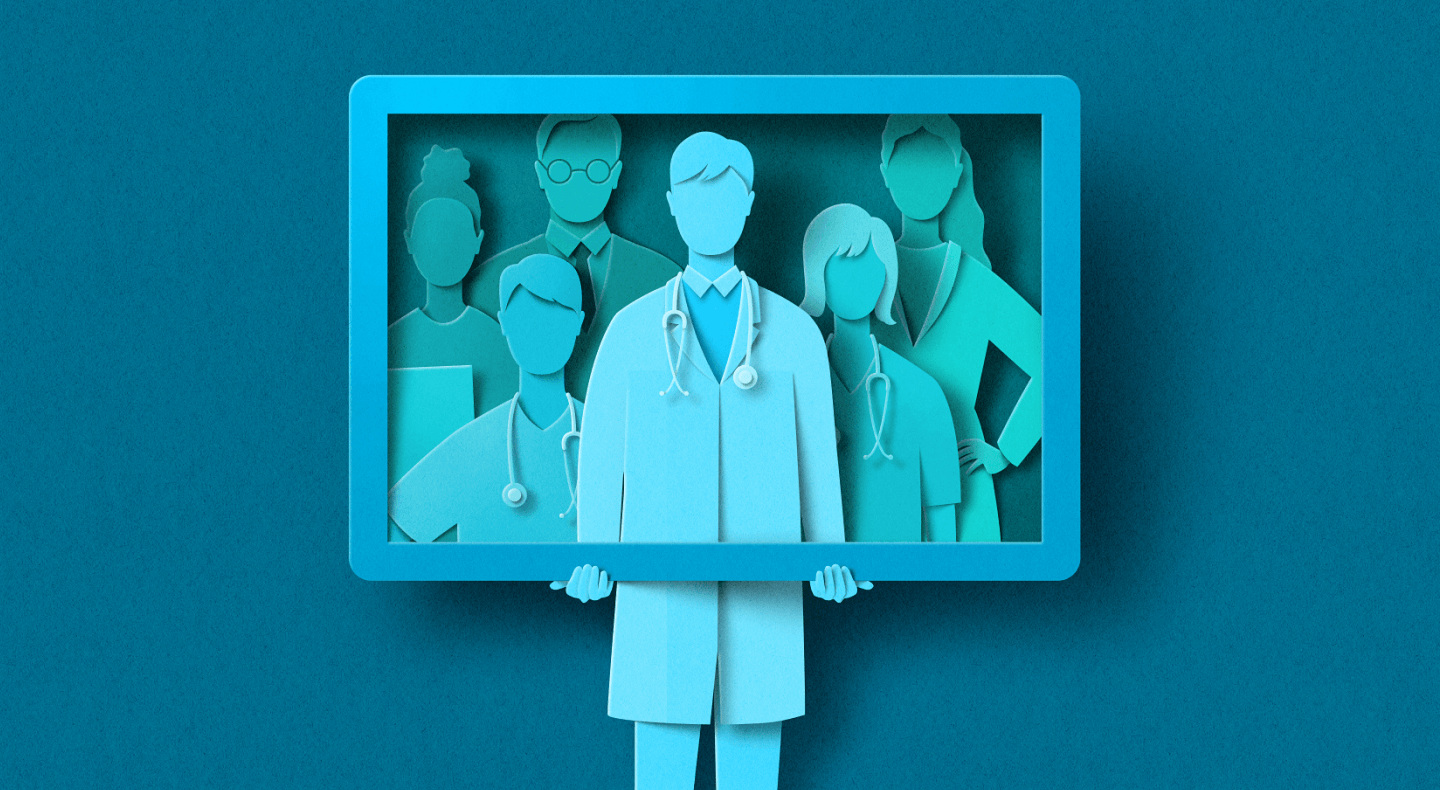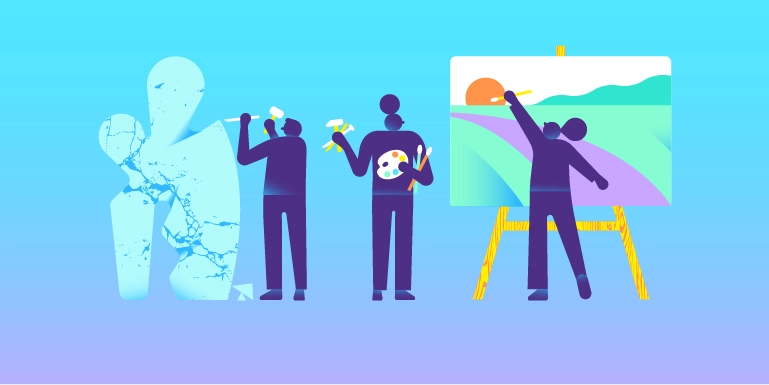
When Kathleen McGrow was a nurse at the R Adams Cowley Shock Trauma Center at the University of Maryland , the pace was frantic and the work was grueling. She and her colleagues treated a seemingly endless stream of patients suffering from penetrating and blunt trauma wounds, and they experienced the enormous stresses that come with a job most people could never do.
“Back when I started in the ’90s, burnout was a problem,” she says. “But I don’t think the general public knew.”
They know now.
The pandemic laid bare the crisis of burnout in the healthcare industry and exacerbated it in crucial ways: schedules that are more demanding than ever, facilities that run short of beds, onerous new sanitation and distancing requirements, and a constant struggle to find sufficient supplies of everything from oxygen tanks to personal protective equipment.
Many have hit their limits. A recent survey found that nearly a third of frontline healthcare workers in the U.S. are now considering not simply moving on from their institution, but leaving the field altogether. Indeed, the World Health Organization projects a shortfall of 18 million health workers by 2030.
But if the pandemic has overwhelmed these workers, it has also spurred a wealth of research into the causes of burnout and the ensuing fallout, from mental health impacts to national turnover rates among RNs. These studies and surveys also point toward concrete solutions—positive ways that the smart implementation of technology can help reduce burnout to make healthcare, well, healthier.
Easy virtual appointments
To be sure, technology can’t cure every challenge. Increased staff, higher pay, shift scheduling that meets workers' needs, and improvements to workplace culture are all key factors to fighting the sort of exhaustion that can spur people to leave.
“I had a physician tell me, ‘I have a doctorate in medicine, not in computer science. Please don’t make me do tech support for my 80-year-old patient.’”
And to those in the industry who don’t have access to the right digital tools for their tasks, technology might seem like a source of frustration rather than a promising solution. According to a study in the Annals of Internal Medicine , physicians spend 16 minutes per patient filling out electronic health records (EHRs)—more time, on average, than they spend with the patients themselves. But medical workers want to spend time helping patients, not fiddling with apps.
“The overhead related to technology and process is a common factor contributing to provider burnout,” says David Newman, a principal product manager lead at Microsoft. He notes that intuitive, easy-to-adopt technology platforms can help to eliminate manual tasks and automate workflows, increasing flexibility for everyone involved. “It can improve both the clinician and patient experience.”
Telehealth is the prime example of how quickly technology can transform care delivery models. “For a long time, virtual appointments were a nice-to-have, an added benefit,” says Nicole Herskowitz, vice president of Microsoft Teams and the Microsoft 365 Platform. “When COVID hit, that was no longer the case.”
But virtual appointments require both the patient and the caregiver to be able to easily operate their video-conferencing software. Just 41 percent of physicians who responded to a McKinsey survey believe that they have the technology to deliver virtual care seamlessly.
“I had a physician tell me, ‘I have a doctorate in medicine, not in computer science. Please don’t make me do tech support for my 80-year-old patient,’” says Kristina Behr, Microsoft’s Vice President of Product Management for Frontline Workers and Industry.

Just 41 percent of physicians in one survey said they have the technology to deliver virtual care seamlessly.
“Getting into a video checkup needs to be as accessible as possible,” Newman says. For instance, tools like Teams allow patients to join virtual appointments from the browser on their mobile device wherever they are, no need to download an app. They can also do a test call ahead of time to ensure there aren’t any technical issues.
And just like in-person appointments, health calls involve a whole host of administrative and supplementary tasks. Many of those tasks, from appointment scheduling and patient intake to creating customizable online waiting rooms and monitoring patient queues, could be streamlined and simplified with the right tools.
“One of the top technology solutions to relieve stress on frontline healthcare workers is managing appointments,” Herskowitz says. “Healthcare workers need a comprehensive view of both in-person and virtual appointments in one location, including real-time updates on wait times, queueing, missed appointments, and staffing delays to ensure a quality experience for patients.”
The right tools can also help workers swap shifts and manage their own schedules. Nursing “handovers,” the change of shift reports so central to patient care, can be streamlined. Research shows that frontline workers are already convinced that technology has the potential to relieve “a lot” of the frustration of shift scheduling.
Enhanced wellbeing
It’s clear that the current crisis calls for health industry leaders to increase their focus on employee wellbeing. A recent study in Nursing Administration Quarterly showed that workplaces that provided wellness support—such as offering access to mental health support and maintaining appropriate staffing levels—were at least three times more likely to have their staff experience better mental and physical health, less burnout, and a higher quality of life.
During the pandemic, shared stresses bonded frontline workers to each other. More broadly, surveys regularly show that employees who feel supported and heard are less likely to experience burnout. In addition to facilitating communication and teamwork, technologies can help strengthen the bonds between co-workers. Indeed, remote workers, communicating largely through video, emails, and chat, say they felt more connected than before switching to hybrid work.

Solutions that improve communication and collaboration can also ease the added workload created by electronic health records.
“People want to feel like they have colleagues in arms,” says Robert Groves, chief medical officer of Banner/Aetna. “If you take away the human connection and focus exclusively on throughput, then you have just eliminated the reason that most people get into healthcare.”
Lack of communication and siloing can be a major source of burnout for health professionals. Common problems aren’t identified and solutions aren’t disseminated because data isn’t being shared as widely as it needs to be. Siloing can also have a negative effect on patient care: a Commonwealth Fund survey found that only about half of primary care physicians in the U.S. ever receive health data from specialists about any changes to patients’ health plans or medications, leaving them in the dark about information critical to care. The right communication system can break down such barriers.
If there is an upside to the burnout crisis, it might be that people are taking a much harder look at the problem than ever before.
“Centralized communications for frontline healthcare workers is critical to helping care teams provide the best possible care,” Herskowitz says. “They need a secure platform that supports text, images, audio, and video with priority notifications and targeted communications by role.”
Solutions that improve communication and collaboration can also ease the added workload created by EHRs: for example, Teams offers caregivers a way to synchronize management efforts across clinicians and administrators, and securely communicate the right information to the right people. Adopting solutions like this doesn’t just increase efficiency—it lets your team know that they and their time are valued.
The case for optimism
Again, technology can’t single-handedly end burnout. But it can help. The right tools can centralize communication, surface insights, facilitate file sharing, streamline workforce management, and integrate partner applications. And the right purpose-built devices can streamline engagement and boost productivity, keeping teams connected whether they’re several feet or many miles apart, and even track and support wellbeing.
When it comes to more specialized tools, AI can synthesize patient data to forecast results. Mixed reality headsets can offer a heads-up display, facilitating consultations and collaboration, and relaying patient data, imaging results, and real-time spatial information. They can even superimpose 3D views of MRI images and CT scans to assist specialists and surgeons during procedures.
None of this involves some fantastical vision of automation McGrow says, and the goal is to allow clinicians to spend more time working at top of license—doing what they are trained to do. “Somebody’s always going to be there to hold your hand and touch your forehead,” she says. “We’re just leveraging technology to offload repetitive tasks.”
If there is an upside to the burnout crisis, it might be that people are taking a much harder look at the problem than ever before, and the pandemic may well lead to workplace improvements that will last far beyond the latest variant. “I do believe that crisis can be a catalyst for innovation,” McGrow says.
Indeed, this 21st-century crisis is pushing tech fast. Hands-free door openers. Digital wayfinding in smart hospitals. Telehealth. “Technology’s not going to solve it all,” she says. “But there are definitely tasks that frontline workers are doing that we could offload to that technology.” And few things feel more important than helping to ease the burden on the people who provide such vital care for all of us.
Watch demos, read customer stories, and learn about new features on the Microsoft Teams and healthcare site for frontline workers.
Learn more about the new announcements for virtual health and care team collaboration.

